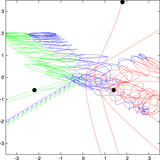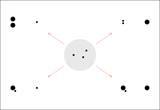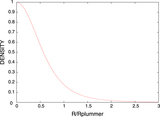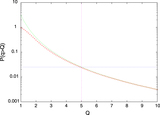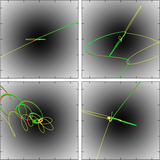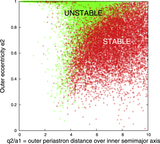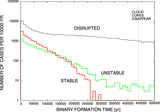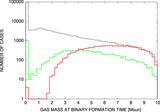Image Details
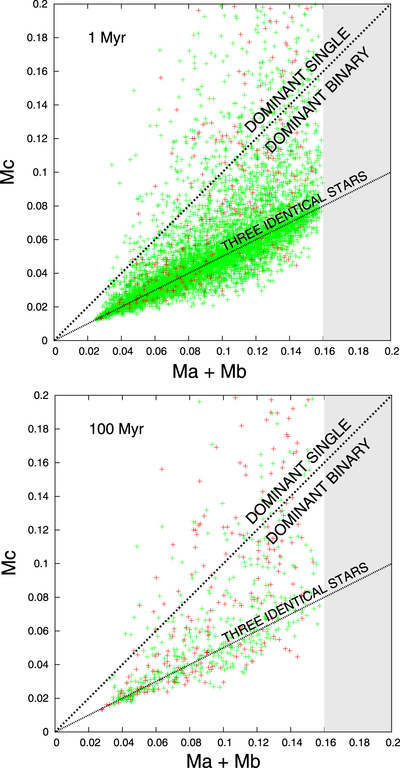
Caption: Figure 8.
Plot of all triple systems that remain bound at the age of 1 and 100 Myr, respectively. Only triple systems that contain a BD binary are plotted. The abscissa is the binary mass, and since only BD binaries are shown, no objects fall in the gray region where binary masses would be larger than 0.16 M⊙. The ordinate is the mass of the third component, which can have any mass. The locus where all three components have identical masses is indicated. The lower right half of the diagram harbors triple systems where the binary mass exceeds the mass of the single component, while the upper left half is the region where the single dominates the mass of the system. Red points represent bound stable triple systems and green points are bound unstable systems. At 1 Myr many triple systems have already broken up, but many remain bound, although the figure shows that they are mostly unstable (7812 unstable vs. 385 stable). At 100 Myr, most of the unstable triples have broken apart, releasing a BD binary into the field, and the number of stable (363) and unstable (472) systems are approximately equal. The unstable binaries that will release BD binaries are primarily located around the line for three identical objects, that is when a BD binary is created the third star that is released is also a BD or VLM object.
Copyright and Terms & Conditions
© 2015. The American Astronomical Society. All rights reserved.


